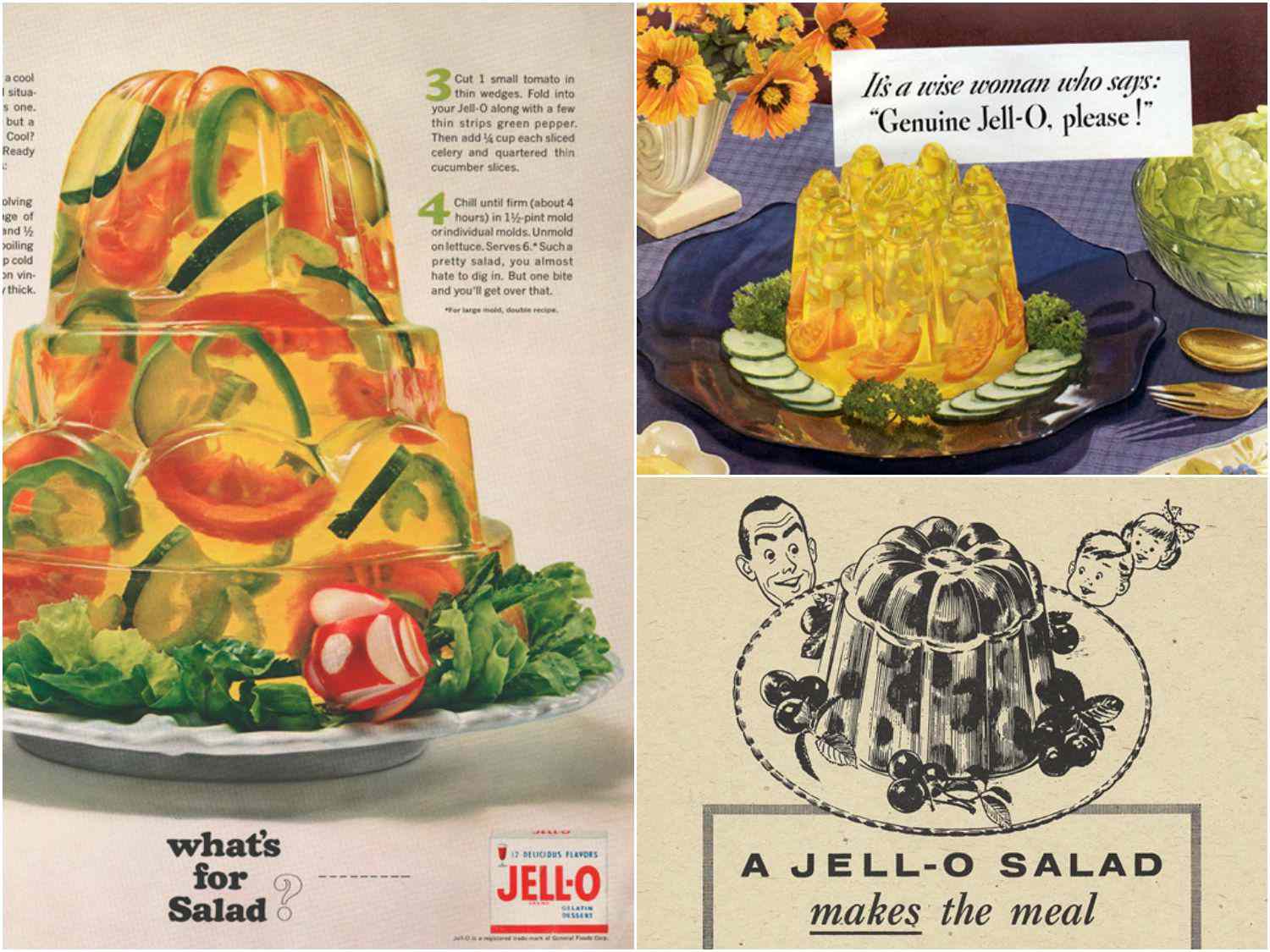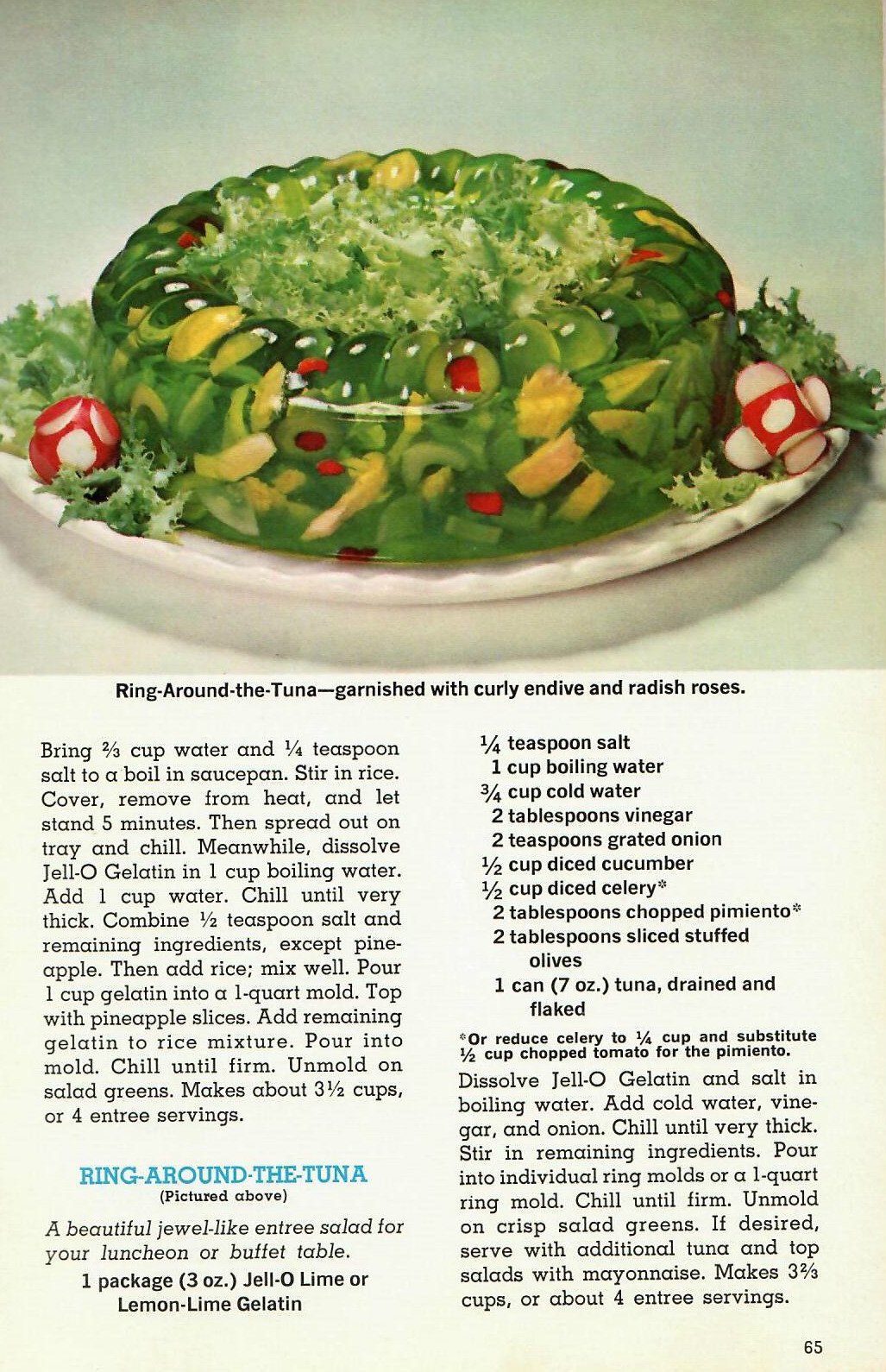Discovering the Charm of 1960s Jello Salad: A Retro Delight
The 1960s were an era of culinary experimentation, and one dish that truly stands out from this time is the Jello salad. These colorful, wobbly creations were a staple at family gatherings, potlucks, and holiday feasts. Let's explore the fascinating world of 1960s Jello salad, its varieties, and why it still holds a special place in our hearts today.
What is a 1960s Jello Salad?
A Jello salad, also known as gelatin salad, is a dish made by combining flavored gelatin with various ingredients such as fruits, vegetables, nuts, and sometimes even meat or seafood. These salads were often molded into elaborate shapes using specialized molds, making them as visually appealing as they were tasty.
Popular Varieties of 1960s Jello Salad
1. Fruit Jello Salad
Fruit Jello salads were perhaps the most popular version. These salads typically included canned fruits like pineapple, mandarin oranges, and maraschino cherries. Sometimes, fresh fruits such as bananas, grapes, or strawberries were added for extra flavor and texture. The gelatin was usually a matching fruit flavor like strawberry, lime, or orange.

1960s jello salad
2. Vegetable Jello Salad
Although it might sound unusual today, vegetable Jello salads were quite common in the 1960s. Ingredients like shredded carrots, celery, and even green peas were mixed with lemon or lime-flavored gelatin. These salads were often served as a side dish with dinner.
3. Ambrosia Jello Salad
This variety combined the flavors of ambrosia (a fruit salad with coconut, marshmallows, and whipped cream) with Jello. Typically made with orange or pineapple gelatin, ambrosia Jello salads included mini marshmallows, shredded coconut, mandarin oranges, and pineapple chunks, all mixed into a fluffy and sweet concoction.
4. Seafood Jello Salad
One of the more adventurous 1960s Jello salads included seafood. Shrimp or crab was mixed with lemon or lime gelatin, along with celery and green olives. This savory version was often served at elegant gatherings and was considered quite sophisticated at the time.
5. Creamy Jello Salad
Creamy Jello salads were made by incorporating whipped cream or mayonnaise into the gelatin mixture, creating a smooth and creamy texture. Ingredients like cottage cheese, crushed pineapple, and nuts were often added, making these salads rich and decadent.
Why Were Jello Salads So Popular in the 1960s?
Convenience
Jello salads were easy to prepare, especially with the advent of instant gelatin mixes. Busy homemakers appreciated the convenience of these quick-to-make dishes that required minimal cooking.
Versatility
The versatility of Jello salads was another reason for their popularity. They could be sweet or savory, simple or elaborate, and were suitable for any occasion, from casual family meals to formal dinners.
Visual Appeal
The 1960s was a decade that celebrated vibrant colors and bold presentations. Jello salads, with their bright hues and interesting shapes, fit perfectly into this aesthetic. They were often the centerpiece of the dining table, admired for their beauty as much as their taste.
Cultural Influence
Cookbooks and women’s magazines of the era frequently featured Jello salad recipes, further embedding them into the culinary culture of the time. Brands like Jell-O also heavily marketed these salads, providing endless recipes and serving suggestions to inspire creativity.

1960s jello salad
Nostalgic Revival
Today, there is a nostalgic revival of 1960s Jello salads. Food enthusiasts and retro lovers are bringing these vintage dishes back to life, celebrating their quirky charm and historical significance. Whether it's for a themed party or simply to relive a piece of culinary history, Jello salads continue to enchant and amuse.
Conclusion
The 1960s Jello salad is a delightful relic of mid-century cuisine, showcasing the creativity and culinary trends of the era. From fruity and sweet to savory and creamy, these gelatinous creations offered endless possibilities and brought a touch of whimsy to the dining table. Today, they serve as a nostalgic reminder of a time when culinary experimentation was celebrated, and mealtime was a colorful adventure.